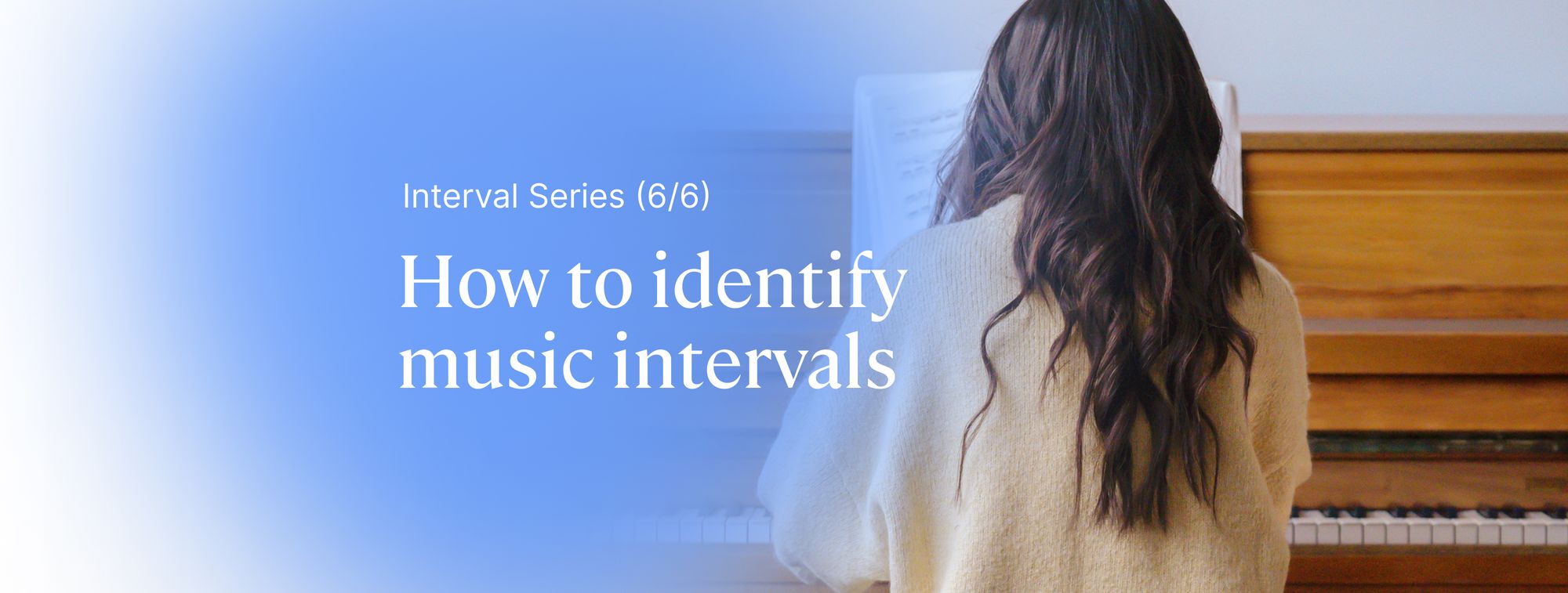Welcome to the last article in this series about intervals. It's been a long journey with a lot of information and examples, but we're finally here!
In part 5 we talked about:
- The descending major 3rd
- The descending perfect 4th
- The descending augmented 4th
- The descending perfect 5th
Here we'll finish by talking about:
- The descending minor 6th
- The descending major 6th
- The descending minor 7th
- The descending major 7th
💡 To refresh your mind on what those interval names mean, check out our dedicated article here.
How to identify a descending minor sixth
As we reviewed in this article, the minor 6th has 8 semitones. Let's listen to some examples:
- C-E
- F-A
- Gb-Bb
- A-C#
Listen to the first two piano notes of Love Story by Francis Lai. These 2 notes create a descending minor 6th:
How to identify a descending major sixth
As we reviewed in this article, the major 6th has 9 semitones. Let's listen to some examples:
- C-Eb
- D#-F#
- Bb-Db
- A-C
Listen carefully to "Man in the Mirror" by Michael Jackson; at minute 1:07, when he sings "I'M - START", the 2 notes form a descending major sixth:
How to identify a descending minor seventh
As we reviewed in this article, the minor seventh has 10 semitones. Let's listen to some examples:
- C
- D-E
- Gb-Ab
- F-G
Let's check out Watermelon Man by Herbie Hancock. At 0:15 , you can hear the first note of the melody (Eb) and at 0:18 the second note (F), both played by saxophone and trumpet. That's a descending minor 7th:
How to identify a descending major seventh
As we reviewed in this article, the major seventh has 11 semitones. Let's listen to some examples:
- C-Db
- D-Eb
- E-F
- G-Ab
"Pictures at an Exhibition" is one of the most famous compositions by Modest Mussorgsky. The 9th movement is called "The Hut on Fowl's Legs" and it begins with a descending major 7th (F# - G):
WOW! It's been a long journey through intervals. Don't forget to practice on your keyboard or the virtual one in Flat to master all of them.
Thank you for coming along with me,
Articles in the series about intervals:
